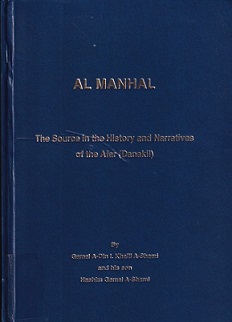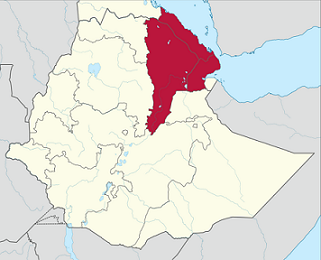Afar history from within
 As a gift from a descendant of the authors, the ASCL library received a copy of Al Manhal, The Source in the History and Narratives of the Afar (Danakil).The book was published in Egypt in 2018 and is the English translation of the Arabic edition that appeared in 1997 in Egypt. An earlier Arabic edition (Saudi Arabia, 1994) and an Amharic translation (2007) exist as well.
As a gift from a descendant of the authors, the ASCL library received a copy of Al Manhal, The Source in the History and Narratives of the Afar (Danakil).The book was published in Egypt in 2018 and is the English translation of the Arabic edition that appeared in 1997 in Egypt. An earlier Arabic edition (Saudi Arabia, 1994) and an Amharic translation (2007) exist as well.
The book is written by two authors, Sheikh Gamal A-Din Ibrahim Khalil A-Shami, from Tio on the Red Sea coast (today’s Eritrea), and his son Hashim Gamal A-Shami, but father and son did not write the book together. The father’s two handwritten Arabic manuscripts (a draft and an edited version, both carrying the title A-Sahih Al Manhal Fi Akhbar A-Danakel (The Authentic Source in the History and Narratives of the Afar (Danakil)) were found only after his death in Tio in 1960. For reasons of security he had, under Haile Selassie I’s regime, never dared to publish it.
Foreign writing
The introduction describes how Sheikh Gamal A-Shami felt the need to write the history of Afar. No book he considered trustworthy and thorough about the ‘Afar Triangle’ - covering the northeastern part of Ethiopia (Afar Region) and sections of Eritrea and Djibouti - did exist, and he wanted to fill this gap, informing ‘Muslims and others’ about the Afar country. In what are probably his words we read: ‘… it is my duty, as a patriotic author, neither to be content with the foreign writings nor to authorize someone else to do a job I can do myself’ (p. 1).
Gamal A-Shami travelled far and wide in Afar country and, next to consulting Arabic written sources and one Italian one, he made extensive use of oral history, consulting 43 elders for his book: ‘…after revision and scrutiny, I relied on the consensus of trustworthy elders and what I have seen myself, what I researched in the not-yet-printed registers of the ancient. For example, the history of the Afar Sultans … in Aussa region, incidents, pedigrees, inscriptions on graves and shrines and others. I spared no effort to collect all this from trustworthy elders, making sure not to report any story or narration from anyone younger than sixty years old, other than the esteemed noble Hajj Ibrahim, nicknamed “Haisoma Omar Mohamed”' (p. 3).

But some ten years after his death, Gamal A-Shami's edited manuscript is lost in a fire in Cairo, where it had been taken for safety reasons. This event probably contributed to Hashim A-Shami’s decision, in 1975, to publish his father’s manuscript. He embarked on a project that would take him twenty-five years and more of verifying, supplementing and completing the remaining draft manuscript. To be able to consult also Italian materials, apart from Afar narratives and sources in Arabic, French and English, he learnt that language in the process. His efforts resulted in a text that had almost quadrupled in size as compared to his father’s manuscript.
Al Manhal, as a specimen of African history writing by, as such academically untrained, historians from the inside, is not just remarkable for its vast and diverse content, which ranges from 3110 BC to 1960 AD and beyond, encompassing such diverse topics as ancient migrations from the Arabian Peninsula, sultans and sultanates, Islamic schools and sects, famous figures in the desert and in towns, pedigrees of Afar tribes, 19th century treaties and conventions of Afar authorities with Italy and France, narratives about volcanoes, and more. It is also remarkable for making tangible to the reader the process of history writing that shaped it.
How close can we get to history? When Hashim A-Shami finally published the book, he had dropped the word ‘authentic’ (sahih) from its original title. Asking, in the preface (p. F), not to blame his father for having used this word - as had been common practice among Arab historians to indicate that their writings were based on reliable sources - he had concluded that in history writing ‘there is no such thing as “absolute authentic”’.
Heleen Smits

